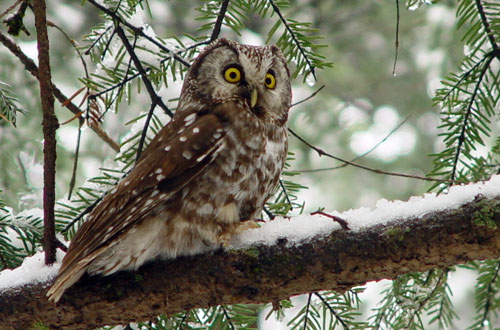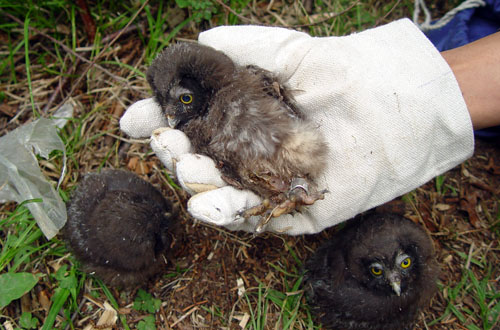We found the first nest of this owl in June 1999. It was in the former hole of a black woodpecker in an old fir tree at 3,100 m. Two very small young were in the nest. This was the beginning of a systematic research and the start of a new project using artificial nest boxes to provide more possibilities for nesting and study. The project was accompanied by trapping of small mammals to document the dominant food of this species. According to the distribution map of the birds of China, the Tengmalm´s or boreal owl occurs in a small isolated area, very far from the northern distribution of this boreal species. That´s why it is ranked as a separate subspecies, Aegolius funereus beickianus. This phenomenon is similar to some other boreal species, such as the Chinese grouse, Sichuan wood owl, and the three-toed woodpecker.

Thick and fluddy feathers of the Tengmalm's or boreal owl could keep them warm in hard winter

The mice in the nest boxes reflect the abundance of small mammals

Chicks were marked when three weeks old

The natural nest site of the Tengmalm's owl is in holes of thick conifer trees
